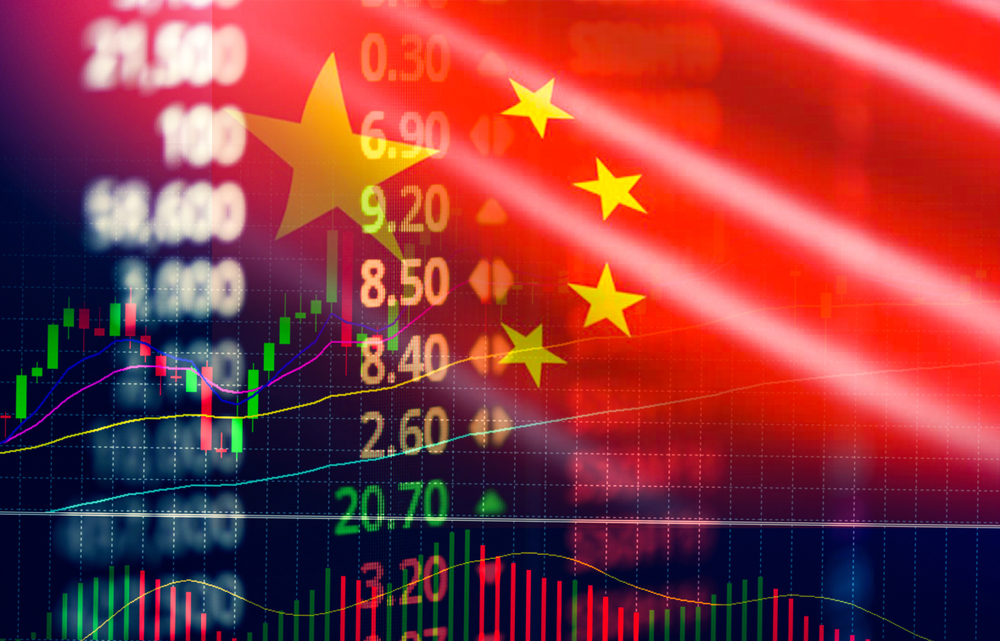A cautionary tale
There’s an old story about a man who was marooned on a deserted island. Searching for food and water, he instead found a cave hiding a chest of pirate treasure. No water in sight though. He spent his last few days, next to the treasure hoping someone would rescue him. He died richer than Croesus, of as simple a thing as thirst. For what good is a fortune, gold, gems or property, if there’s literally no one willing to trade with you for it?
The story, simplistic as it may seem, is a lesson too often forgotten by investors who frequently focus on paper profits: That in financial markets, cash may not always be king, but liquidity always reigns supreme.
Hard Lessons: Long Term Capital Management
Financial undergraduates are bound to come across the infamously complex Black-Scholes formula used to value options. Created by professors Fischer Black, Myron Scholes and Robert Merton, the formula earned Scholes and Merton a Nobel Prize in 1997 and a position in the pantheon of market gurus (Black had sadly died two years earlier).
In 1994, even before the Nobel prize, Merton and Scholes cashed in their fame going on the board of a hedge fund called Long Term Capital Management – LTCM for short. With such calibre brains behind the venture what could go wrong? A lot as it turned out.
The core investment strategy of the company was called “convergence trading”. In essence it was using quantitative models to determine market mispricings. For example, it would purchase a 29-year Treasury bond, while shorting (selling) the 30-year Treasury bond. The two bonds were fundamentally identical (there’s little difference between holding a bond for 29 or 30 years), yet investors piled on the 30 year one, presumably due to the fact it is a big round number, leaving the 29 year bond less traded and underpriced.
The difference between the two bonds was still very small. To augment returns (over 40% per annum) managers employed very high amounts of leverage. At the beginning of 1998 the fund had equity of $4.72b and had borrowed $124b, a leverage ratio of 25-to-1.
Then, a year after the Asian Crisis, Russia defaulted on its financial obligations, causing massive ripple effects in global bond markets. Volatility surged, as traders demanded much higher premiums before investing in a bond.
LTCM’s strategy had bought value, but it had done so at the detrimental expense of liquidity. It had “shorted” (sold) liquid instruments, the only ones now investors preferred, and purchased less liquid ones. News broke out of the celebrated fund’s predicament and fears mounted that there would be a chain reaction as the company liquidated its securities to cover its debt, leading to a drop in prices, which would force other companies to liquidate their own debt in a vicious cycle. Within four months in 1998, the strategy lost over $4.6 billion, almost all its capital, and required a $3.625 billion bailout organised by the Fed before its losses caused a domino effect on its creditors (ironically, only Bear Sterns and Lehman Brothers declined to participate in the bailout).
Liquidity reigns supreme. But how much?
In his seminal work, “Manias, Panics and Crashes, a History of Financial Crises”, Charles P. Kindelberger noted that at the heart of every crisis, from the Tulip Mania in 17th century Amsterdam, to the Wall Street Crash in 1929, lays a trust crisis, turning into a liquidity crisis which then results in a solvency crisis. Any massive selloff of assets is nothing more than a massive surge in demand for liquidity.
We always forgo some liquidity before making an investment. Whether it is something as simple as investing in a stock, a structured product or even just depositing money at the bank, an investor sacrifices the use of their money in the present, for some future payoff.
The question always is: “Is the potential return worth the risk”? History shows that the answer is a moving target and that it may be difficult and that even Nobel-Prize economics professors may need reminding that “there’s no free lunch”.
We will attempt to answer what this means for investors now, and whether present conditions allow for a sacrifice of liquidity to enhance returns.
The Backdrop- Still Unprecedented Liquidity
The current economic and market expansion has lasted for over nine years, marking one of the longest cycles since World War II. Difficult as it is to believe, in September a full decade will have passed since the day Lehman Brothers collapsed, triggering the Global Financial Crisis. Ten years on, global markets are in a very different place. Banks have de-risked and deleveraged. Central banks have been instrumental, not only in providing a significantly more robust supervisory framework, but in suppressing volatility enough to allow for that framework and the global economy to function.
Supressing volatility has been achieved by the simplest of all means: a sharp increase in liquidity, to calm nerves and make sure that market participants know that there are going to be enough willing buyers to purchase their assets if the need arises. Uber-liquidity also ensured that the probability for the need to arise for a fire-sale was diminished.
It is also indicative of the value of liquidity for financial markets. While not a panacea to avert all crises (perpetually low rates come with strings attached), liquidity is an investor’s best friend. Whether the buyers are private institutions borrowing at a virtually zero rate, or central banks themselves, investors have known for the last decade that demand for their securities was all but guaranteed.
But what does the situation look like now?
Central bank balance sheets
A central bank’s balance sheet is a measure of money supply in the economy. In 2003, the four major central banks (US, EU, China, Japan) had a combined balance sheet of $3.3 trillion, or about 8% of global GDP. Consumers levered up, as a confluence of cheaper luxury products made in China and post-2000 low rates, created the excesses which eventually led to the global financial crisis. The onset of the crisis saw unfettered expansion of those balance sheets, in essence creating wealth, a process that came to be known as Quantitative Easing. By the beginning of 2018, combined assets topped $20 trillion, six times higher and roughly 25% of global GDP.
While liquidity, in essence the supply of money, has tripled as a percentage of GDP, it has not become inflationary. Technology and globalisation are certainly the traditional culprits. However, the purchase of assets by the central banks was targeted at the owners of financial assets, such as government bonds and mortgage backed securities, which were mainly institutions, such as banks. Thus, the liquidity did not really end up on Main Street, and inflation (or even hyperinflation which was predicted at the onset of quantitative easing) did not occur. To the contrary, it remained within the financial system, closing holes at bank balance sheets, and reinvested in global markets. What occurred is known as “asset inflation”. At the depths of the crisis, the S&P 500 had dropped to 660 points, and is now about 5 times that amount. (It took the S&P 500 almost 11 years to reach from 650 points to 1500, and less three years to repeat the move under central bank auspices). Bond prices also surged, driving yields to historic lows for the better part of the decade.
Central banks have yet to remove that excess liquidity. The Fed has very slowly started to sell off some of its assets, but at the current pace it could take a generation to bring the balances sheet down to pre-crisis levels. Meanwhile, the European central bank will continue to expand its balance sheet until at least December 2018. Japan intends to carry on with asset buying until the central bank’s target of 2% sustainable inflation is reached, and China will have to take into account the perils of private sector deleveraging before actively reducing liquidity.
Therefore, in terms of central banks, the world is still flush with liquidity. Cheap money is available for institutions, which in turn becomes capital for financial asset purchases, such as equities and bonds.
Interest rates
Apart from central bank balance sheets, which were used actively as a tool during the GFC, central banks also use interest rates, a blunt policy tool to control the flow of money in an economy. Currently, global interest rates are extremely low by any historical standard for all developed economies. And they have been virtually unchanged for almost a decade, an unprecedented amount of time.
In Europe, the ECB has imposed a negative interest rate regime, to force savers and banks to invest and lend, in an effort to repair broken credit channels. In the UK, the basic interest rate is 0.5%, which is the lowest ever recorded, barring a short-term post-Brexit cut which saw the rate at 0.25% for a little over a year. In Japan, rates have been hovering near zero since the mid 1990’s.
The US is slightly ahead of the curve. Starting in December 2015, the Federal Reserve has already hiked seven times, with 1-2 more hikes projected this year and 3-4 in 2019. While, in comparison to other countries, the moves may sound hawkish, by historical standards they are most certainly not. Having spent a record 7-year stint at virtually zero, the current 2% rate is where the previous cycle in fact bottomed out. The projected 3-3.5% terminal rate is where the 1995 cycle bottomed out and lower than any era previous to that.
A special case, due to the Dollar’s status as a global reserve currency, US interest rates have an outsized impact, usually forcing its main trade partners (the EU, the UK, China and Japan) to follow, or suffer currency depreciation due to the rate differential. So global interest rate conditions could become just marginally tighter.
Interbank rates
In August 2007, the Goldman Sachs Alpha fund, as well as several other hedge funds, experienced unchartered levels of volatility, as a result of a withdrawal of liquidity for certain key assets. It was the onset of the global financial crisis which broke out a full year after. As the US housing crisis, which had already begun a year earlier, was peaking, demand for Mortgage Backed Securities began to thin out. Worries mounted over the exposure of banks in those securities, which resulted in higher LIBOR rates, representing interbank willingness to lend. By December 2007, Lehman Brothers, the worldwide authority in bond trading, was already warning that lending conditions were dire.
In the GFC, interbank lending served as the canary in the coal mine. In the current market, capital is more fragmented, so interbank indicators, some of which have come under scrutiny after manipulation attempts, do not have the same weight as an indicator than during the global financial crisis. They are still relevant however.
The main commercial benchmarks, the LIBOR (USD and GBP) and the EURIBOR remain at levels close to the basic interest rate. In the US, LIBOR rates have gone up, mostly due to rising interest rates but also due to legislation driving money market funds away from bank commercial paper, but they are under no means in distressed levels. The TED spread, the difference between the 3 month LIBOR and the 3 month US Treasury Bill, a rate of market distress continues to hover near historic low levels. Currently, US 3 month Libor trades roughly 40 basis points over the three month T-Bill. British LIBOR (around 0.65%) trades in line with interest rate expectations. And for all the worries over Europe, EURIBOR trades in negative territory, in line with the ECB’s main rate. The more official non-LIBOR reference rates, the SONIA (UK), EONIA (EU) and the new SOFR (US) are all trading in line with central bank guidance.
So the conclusion is that interbank liquidity does not signal any sort of stress.
Main Street Liquidity: Money supply and Consumer credit
In the past cycles consumer, or main street, liquidity played a big role in determining the end of the financial market cycle. When consumers run out of steam or lose trust, they are likely to stop buying financial or real assets. In 2000 this meant the cessation of flows in the tech sector, driving over-priced stocks to the bottom. In 2007 it meant that lower income consumers who were over-stretched could not meet their mortgage payments which led to the default of lower grade mortgage backed securities precipitating an unprecedented global financial crisis.
This time around, however, institutional support for the economic and financial cycle has been so massive, that actual consumer input could be less important than ever before. Central bank liquidity drove flows for financial assets and, directly or indirectly, created a very liquid and conducive environment for shareholders and companies.
Still, an overview of current liquidity conditions for the main street economy is useful. After all, before subprime mortgages started to default, overall conditions were liquid.
Broad money supply measures, such as M2 or M3 (M3 is the total sum of deposits, money market funds, short term repurchase agreements and larger liquid assets), often used by economists to gauge overall economic health, are expansive across the board.
Overall, broad money supply growth seems to have peaked in 2017, in line with global economic growth. As global central banks took a more hawkish turn, M2 in the US decelerated from a peak 7.7% in 2016 to 3.8% in May 2018. Similarly, in the EU, M3 annual growth rate has dropped from an average of 5% over the past three years to 4% in June. In the UK, M3 peaked during April last year at 9.2% and is now expanding at 3%.
In terms of liquidity global consumers do not seem too hard pressed. Credit conditions are described as “loose” across the board, and delinquency rates on loans and credit cards are still in check across the major developed economies, even for less creditworthy clients.
Consumers are still fairly liquid and with relatively easy access to borrowing. We have seen some tightening in the past few months, but nothing yet which could cascade into a consumer liquidity crisis.
Why liquidity will persist: Global debt levels
As a principle, too much liquidity creates bubbles. It pushes interest rates down, which means that investors need to increase risk to find the desirable return on their investment. Contrary to popular belief, the world did not deleverage after the Global Financial Crisis. If anything, public debt exploded as the public sector absorbed the debt created by the private sector, allowing households to delever.
Total debt (government, corporate, household) has grown from $97 trillion pre-crisis to $169 trillion in 2017. Growth was mostly centred in government and corporate debt.
In the US, Debt to GDP grew from 60% before the GFC to a peak 105% in 2018. Even if household debt has dropped from 98% to 76%, it is still not enough to cover the increase in public obligations. Chinese total (public and private) debt to GDP has grown from 160% in 2008 to 265% in 2018. UK Debt to GDP has grown from 43% in 2008 to 90.4% in 2018. However, much like the US, household debt fell from 220% to 91%. European aggregate debt peaked around 2014 (from 65% to 91%), but German efforts to control spending and a pickup in growth have resulted in some deleveraging with current debt levels at 86% of GDP. Much like their developed market counterparts (and unlike China), the major European economies, with the exception of Italy, have seen significant reductions in household debt since 2008.
Still, overall debt levels remain high. This is why, despite central bank independence, governments cannot allow interest rates to go too high, let alone reach 80’s levels of 15%-20%. Higher rates could result in governments having difficulties meeting their own interest payment obligation, stunting growth. In a monetary world the situation could be resolved only with further money printing, negating the effect of any interest rate hikes.
Overview
Evidence suggests that the world is still a very liquid place, and will probably continue to be so as present debt burdens do not allow for too steep rate hike paths. Also, with the amount of institutional support for liquidity as well as the improvements in general oversight, we feel that the world is more insulated from a liquidity crisis, significantly more so than in 2008.
Having said that, pockets of illiquidity can still arise. The question is, as always, will they have a systemic effect? The question was answered poorly in 2007, where most economists felt that the US subprime market was insulated. Analysts failed to realise how these mortgages had been bundled together with higher rate mortgages and distributed across the whole of the banking spectrum, in essence creating channels for risk to spill over, which were not present during previous economic cycles.
Risks to the liquidity thesis
We analysed the major risks to liquidity and we identified seven major risks which can create pockets of illiquidity significant enough to cause a systemic problem. High levels of corporate debt, Chinese deleveraging, the threat of inflation, central bank policy mistake, European periphery risks, a downside growth surprise and algorithmic trading are the most significant.
Corporate Debt
As authorities clamped down on bank lending following the Global Financial Crisis, corporations turned toward private financing, increasing their bond issuance. A recent report by McKinsey sheds light on the global corporate bond market.
Historically supressed yields helped obtain very cheap financing (much cheaper that what is usually available at banks), to the point where corporations find it advantageous to borrow just to pay dividends and fund share buybacks. In 2007, bonds accounted for 10% of global corporate debt. Today it’s double that. Corporate bond issuance increased from $800b to $2trillion during that period, rising 2.7 times since 2007 to an overall $11 trillion, doubling as a share of GDP.
As corporate bond issuance increased exponentially and borrowing became easier for more companies, investors sought yields in higher risk ventures, which eventually lead to a deterioration in credit quality. Non-investment grade (junk) bonds, quadrupled in size over the past decade, reaching a level of $1.7 trillion. According to McKinsey, 20-25% of corporate bonds in Brazil, China and India are at risk of default. Their calculation shows that a 2% rise in interest rates could increase those at risk to 30-40%. In advanced economies, no more than 10% of bonds are in peril. However, a recent crisis in the US energy sector reveals specific pockets of risk, as about 18% of those bonds are considered high risks.
Pockets of illiquidity in the corporate bond market could be a prime candidate to spark a global trust crisis. However, as previously suggested, overall high debt levels for countries and companies will result in downward pressure on interest rates.
China
As China began the next step towards developed market status, moving away from being the world’s vendor of cheap manufactured goods and focusing on consumption, investors have been increasingly worried about the country’s previous excesses in debt accumulation. Chinese corporate debt stands at $11 trillion, with $1.3 trillion maturing in the next 12 months. Authorities have been clamping down on debt, which would make it more difficult for poorly run companies to continue operating. Furthermore, the government has shown that it would intervene only when a company has significant strategic or social importance, even letting State Owned Enterprises default when needed.
The rate of downgrades to upgrades of corporate bonds has been the worst in the last five years, according to Bloomberg. As the threats of defaults arise, so does the pressure on the Chinese financial system. These pressures may be exacerbated as the potential of trade wars becomes more real.
China is the world’s second largest economy and a lynchpin for global growth. The prospect of massive defaults or policy mistakes during the deleveraging process could seriously challenge the global liquidity thesis.
The threat of inflation
Can one print an almost unlimited amount of money and not cause inflation? The answer, contrary to what commonly held wisdom said before 2008, was “yes”. The allocation of the extra money within a closed financial system rather than directly to consumers, allowed for monetary expansion without the much feared hyper-inflation consequence.
However, the global economy has improved over the past two years filling consumers with confidence and driving prices upward. Global employment conditions have continuously improved, with most developed economies now near full employment status. The US, for example, is currently experiencing unemployment of 3.8%. Meanwhile, the NAIRU (Non-Accelerating Inflation Rate of Unemployment, the level below which unemployment becomes inflationary) is calculated by the Fed at near 4.6%. The situation is similar in other developed economies such as the UK or Germany. When economies are in full employment, companies tend to compete for talent by hiking wages, which in turn may improve consumption.
At the same time, commodity prices have been soaring, adding input inflation pressures. Since the beginning of 2017, oil has risen by 38% and copper prices by 20%.
The confluence of high employment, higher oil prices, a robust wealth effect (global stocks are up 25% year on year), loose credit conditions and the pull back of globalisation (we are seeing a rapid deterioration of trade across the board) could create the perfect inflation storm.
However, following the 2007 crisis, much has changed in consumption patterns. The demand conditions necessary for inflation are simply not that potent. Technology has been lowering retail prices, offering consumers constant access to deals and discounts. Also, many now prefer to save windfalls (such as bonuses or lower prices at the pump) rather than spend them. Automation reduces wage pressures. Demands for wage hikes are more moderate than in the past, while a lot of companies also use non-monetary benefits to attract workers (extended holidays, agile working, nurseries etc). Despite vast inflationary pressures, inflation in most developed countries hovers around a very moderate 2-3%, very near central bank targets. Should, however, inflation pick up, it could lead to central banks tightening interest rates faster than anticipated, not just restricting liquidity but spreading fear over future liquidity conditions as well.
Policy Mistakes
To find themselves behind the inflation curve would be anathema for central bankers. Still, for many it would be preferable to a serious policy mistake. In 1937, the US Federal Reserve, eager to “declare victory” and planning for an “exit strategy”, tightened pre-emptively to avert inflation from faster economic growth. In the meantime fiscal conditions contracted, as stimulus expired and Federal taxes were collected for the first time. Instead of stabilising the economy, the mistake undid 4 years of economic recovery, driving unemployment up from 14% to 19% and stunting growth. The US economy did not recover until after Japan surrendered in 1945.
The dangers of inflation are real. But so are the dangers of a policy mistake. As the Federal Reserve tightens, the rest of the world feels pressure as well, due to the Dollar’s status as the global reserve currency. The current tightening cycle is still very shallow, and consumer and market conditions are very liquid. The danger lies in the Fed forgetting its importance to the global economy. Many companies and countries around the world, especially in the emerging market space, have issued debt in Dollars. The Fed’s newfound tendency to look inwards, while ignoring rising risks from and to other economies, could hurt not just those economies, but global growth and eventually the US.
In the UK, even moderate rate rises could have significant effects for a generation of mortgage holders who have never experienced a rate hike. The BoE calculated that the average mortgage holder could lose £930 per annum from a 1% rate hike. The average disposable income for UK households is around £27.500. This means that a 1% hike would have more than triple (3.3%) the effect on household income, hitting already supressed consumption. In the US, 40% of consumers would have to borrow to cover for a $400 emergency expense. Would tightening necessarily be a mistake? Consumption should be balanced against longer term considerations such as the creation of bubbles the needs of pension funds and the credit cycle.
Another policy mistake could come from the ECB. In its eagerness to protect German and Austrian savers, the central bank could remove QE, or even tighten, at a time when credit conditions could deteriorate, especially in Italy or Spain, both countries whose economies could relapse.
Policy mistakes occur when ideology and politics take precedence over data. At this point, despite the Fed’s change in direction, we have not seen the world’s most important central bank ignore data. In the UK, the central bank also has a good record of weighing the pros and cons and erring on the side of caution. But the European situation is more delicate, and wrong messages from the central bank could reignite a European crisis and freeze credit for companies and nations.
Europe
Despite massive amounts of liquidity provided by the central bank in the last few years, the yield for the 2-year Italian Bond rose almost by 2% in a single day in April, after President Matarella threatened a constitutional crisis by refusing to confirm the government’s proposed finance minister. The speed of the rise and the trade data suggested that sellers could not find buyers and had to lower prices significantly. Where did the liquidity go?
The culprit here is the ECB itself. Last year, the central bank bought all of the sovereign issuance in the Eurozone and a good portion of the credit issuance. This left almost no opportunities for private traders, effectively crowding them out of the market. Now that volatility has risen, there are no private investors to pick up the slack.
The design flaws of the Euro have always been a danger for the world’s largest combined economy, the Eurozone. Presently, the environment is not conducive for unanimity and agreements in the Eurogroup, the EMU’s most important body. Therefore, the possibility of future liquidity crises, especially as the ECB will be ending its quantitative easing programme by the end of the year, is a possibility for markets.
Negative growth surprise
Global growth improved unexpectedly in 2017, but 2018 has already seen a growth slowdown. Trade flows have slowed significantly and the manufacturing renaissance which took place in H2 last year is subsiding, as new order growth has moderated. Meanwhile, companies are mindful of their margins, as they experience the sharpest rise in input costs in almost seven years.
The US stands out, as Donald Trump’s $1.5 trillion stimulus has boosted the economy, driving a cycle-high 24.5% rise in corporate profits. However, the economy is forecast to slow down in 2019 and more so in 2020, in what Ben Bernanke aptly called a “Wile E Coyote” moment.
A precipitous slowdown in global growth, which could be exacerbated by the proliferation of “trade wars” (the OECD has calculated a potential 1.4% impact in Global GDP now at 3.6%) could result in higher burdens for both nations and companies, as they struggle to meet their interest payments. Those who wish to gamble with inflation could see an increase in money supply. Those who won’t, however, could see significantly tighter liquidity conditions, as governments and companies seek to reduce expenditure and maybe increase receipts, i.e. taxes.
Algorithmic trading
Algorithmic trading currently accounts for an estimated 80% of market transactions. A recent paper by the Bank of England showed how algorithmic trading may exaggerate liquidity, warping risk models for investment vehicles, and then withdraw it as volatility increases. A July 2011 report by the International Organization of Securities Commissions (IOSCO) Technical Committee noted that because of the strong inter-linkages between financial markets, such as those in the U.S., algorithms operating across markets can transmit shocks rapidly from one market to the next, thus amplifying systemic risk.
When investors count on finding buyers who have historically been there, only to find out that they have departed, they would be forced to sell at much lower prices. This makes markets more prone to “flash crashes”. Computer trading is currently one of the biggest risks to market liquidity, as it creates an unknown, which is not easily factored in models.
Conclusion
Investors continue to enjoy unprecedentedly liquid markets. Central banks have retained their expanded balance sheets throughout the recovery, so the theme of “too much money chasing too few opportunities” will continue to be a tailwind for global markets. Despite the fact that we have entered a rate hike cycle, interest rates are slated to remain low by historical standards. Debt moved from private onto the public balance sheets, but it did not disappear. In fact debt levels remain elevated, which is why central bankers would be hard pressed to justify steep rate hikes, which could hurt public coffers and stunt growth. Institutional support for liquidity has been so intense throughout the cycle, reducing the effect consumer liquidity has historically had on risk assets. We have no evidence that institutional support for liquidity has waned significantly. However, investors should not be too complacent. The cycle is already long in the tooth and that recent central bank (relative) hawkishness has already had an effect on risk assets, forcing markets to take a pause and disrupting positive momentum. Various pockets of illiquidity, such as corporate debt, China and Europe can also become systemic. Further threats to the liquidity thesis include the possibility of an inflation surprise, significantly slower growth and policy mistakes. Algorithmic trading is an “x” factor as liquid instruments could become illiquid much faster than in the past and without warning. Overall conditions remain very liquid and we feel any systemic risks could be managed in this backdrop. However, given how advanced we are in the cycle and the marginal increase of downside risks, we would still err in the side of caution. We believe this is not the time to make significant liquidity sacrifices and prefer exposure to fairly liquid investments.
Asset Allocation
We acknowledge that asset allocation is still the primary driver for our portfolio returns. We remain cautious on the UK due to uncertainty regarding monetary and fiscal policy in the wake of Brexit. Aside from an underweight UK position we have no strong geographic preferences. In January 2018 the investment committee remained overall bullish on risk assets, recognising that equities continue to offer more value comparative to bonds. It also acknowledged that the risk of a black swan -an unforeseen cycle-ending event- is rising. We thus decided to tactically take some risk off the table, reducing our equity overweight to “Neutral” and place the proceeds in cash. In April, we redeployed some of this cash into Gold, to enhance investor returns in the face of increasing volatility. During our June investment committee we maintained our stance, recognising that nothing has changed for our investment thesis.
At the beginning of the year, we also reduced the number of funds in the portfolio to increase the focus on those fund managers that make a difference. The underweight in bonds was maintained, as we feel that they continue to be expensive versus equities. We still favour large-caps but are more concerned about high dividend stocks as the global economy accelerates. In the bond space we maintain an exposure in longer dated Gilts and shorter duration corporate bonds, adopting a more ‘barbell’ approach for the fixed income part of our portfolios.
Risks to our asset allocation
Our estimates of course reflect a base case scenario and are by no means an absolute version of the future. Global economic performance has decelerated somewhat, while inflation pressures have intensified. Investors are apprehensive that the cycle, already almost 9 years long, is nearing its end, despite positive fundamentals.
We are already seeing some of the risks that we highlighted at the beginning of the year play out. Markets are now mostly focused on risks stemming from protectionism and volatile European politics. Global debt levels continue to be alarming in the world’s biggest economies. Excess demand, which drove output in H2 last year and Q1 2018 appears to have subsided, leaving companies to work off their backlogs.
Central banks continue to tighten monetary conditions, ending the “Whatever It Takes” era, as inflationary pressures intensified. Fed Chair Jay Powell appears less inclined to confirm the “Fed Put” or the Fed’s willingness to cater to the global economy. Central banks in the UK and Europe are more hawkish, with the ECB confirming it will be ending QE at the end of the year and the UK primed for a summer rate hike.
In the US the main risk is a policy mistake, especially if rates increase and inflation fails to keep up or growth decelerates materially. After H2 2019 when the effect of the stimulus is expected to expire, growth concerns could be renewed. Additionally, investors have yet to discover the true depth of recent tax reforms, which could put additional strains on the budget, with debt issuance expected to rise.
In the UK we have seen some of the impacts of Brexit in the form of slower growth, dented consumption and a slowdown in house prices. Inflation and house prices have stabilised but weakness could accelerate should businesses decide to go ahead with their Brexit contingency plans.
In Europe, there are renewed fears over the political fate of the EMU, after new governments in Italy and Spain seem set to challenge the dictums of EU institutions.
We feel that short-term systemic risks are mostly manageable and liquidity is still ample. However, there is now less probability of a pickup in private investment and capital expenditure supporting growth acceleration over the medium term, despite the economic stimulus in the US.
Global
Economy
The global economy continued to grow in Q2 2018, however with the prior economic synchronicity turning to divergence. The US economy, propelled by record-high consumer and business optimism, pulled ahead of the pack. Meanwhile Europe, hit by a deceleration in France and a previously stronger currency, lagged as the pace of new orders and especially export orders has weakened. The UK has continued to slow down as consumption and construction suffered, while Japan experienced its first output contraction in 2 years. The Dollar rallied significantly, the Yen and Sterling have had bouts of strength, while the Euro has been decidedly weaker as systemic risks grow for the common currency area. Many developed economies (US, UK, Germany) are now running at their natural levels of unemployment (i.e. full employment), accentuating inflation pressures which have already increased after oil prices rose to $65-$75. As such Europe is now experiencing higher inflation, catching up to the US and the UK. The US experienced the strongest earnings season since the Global Financial Crisis (EPS +24%), with over 77% of companies beating earnings expectations. Central banks have adopted a tightening bias, with the Fed tightening twice already this year and the market pricing in 1-2 more hikes before the end of the year. The tone is also more hawkish, as the Federal Reserve has focused on local growth and inflation, refraining from making comments on rising risks from abroad (such as Italy). The ECB also followed a more hawkish route, pledging to half QE in the autumn and ending the programme altogether by the end of the year, while considering rate hikes from H2 2019. The Bank of England maintained its interest rate regime with markets now fully pricing in at least one rate hike this year. Trade conditions have deteriorated, with global trade slowing. Emerging Market weakness persisted, with countries feeling the pressure of a stronger US Dollar and increasing uncertainty over global trade.
Market Performance
Large cap global equities were only moderately up (+1.7%) for the second quarter of the year, trending sideways as worries over trade and Europe kept investors in check. Energy was the strongest sector due to oil appreciating, while Financials suffered as yield curves flattened. However, significant USD appreciation led to GBP returns of 8.2%. At the end of Q4 global equities were trading at 17.1x earnings, at cycle highs and significantly above their 15.2x average since 2000. At the end of Q2 2018 they were trading at 15.2x, exactly at their long term average. US equities continue trade at a premium versus their European, UK and Emerging Market peers while Japan is the cheapest market amongst developed markets. By comparison global bonds fell 3%. Oil prices gained a further 14.8%, and have in total experienced a 20% appreciation year to date, while gold lost 5.5% for the quarter (still up 1.5% in GBP terms).
Outlook
Valuations for global stocks have come down but are still slightly above long term averages. However increasingly good earnings, the large weighting of tech companies in indices and the unprecedented amounts of liquidity chasing few opportunities have reduced the usefulness of historic data for comparison purposes. We believe that earnings growth, an overall robust macroeconomic backdrop and a modest pickup in private investment could support this premium further into 2018, if stock market volatility does not cause a deterioration in fundamentals. We are aware that central bank support for risk assets and thus the economy is reduced, but trust that global liquidity conditions are still supportive of risk taking, as there’s still too much cash chasing too few opportunities. Inflation expectations have risen but we are reserved as to whether higher inflation scenarios will be fully realised. The global economic slowdown could accelerate should trade tariffs between the US and China fully come into effect, becoming a threat to global growth. Despite some risks, we are still broadly positive on risk assets, especially equities, but believe conditions are more challenging for bonds which are still comparatively expensive.
UK
Economy
The British economy, long sensitive to the global economic cycle, continued to slow down as weaker growth, especially out of Europe, weighed on UK fundamentals. The situation has been accentuated by the ongoing Brexit-related uncertainty. Inflation remained subdued, but upward pressures persist. Meanwhile, the economy is running near full-employment, with wage growth above inflation through the quarter. Q1 GDP indicated a slowdown in output from 1.4% to 1.2% year-on-year. A more current measurement by the NIESR indicated that the UK economy grew 0.2% for the three months to May, about half its potential. Manufacturing sector output has waned, reflecting a slowdown in new orders and weaker conditions both domestic abroad. Conversely, retail and the overall services sector may be recovering. The Bank of England maintained interest rates despite earlier signals suggesting a hike, while also downgrading its expectations for the UK economy, predicting growth of 1.4% this year, down from the 1.8% expected just three months ago. The decision to keep rates on hold was split 6-3, however, with minutes suggesting that a summer rate hike is a distinct possibility. Inflation eased from 2/5% to 2.4%, with core inflation settling at 2.1%. Input and output costs have been increasing, however, which means that average prices could accelerate again. Unemployment remained stable at 4.2%, a 43-year low. Average weekly earnings barely edged up, reaching 2.8%. Consumption has picked up. Retail sales edged up in April and May, as consumers picked up the pace after poor weather earlier in the year deferred investment decisions. House price growth has stabilised at around 2%-3% per annum, a far cry from the recent 10%+ figures. However, construction PMI data suggested a pickup in housing and commercial construction during the last part of Q2.
Market Performance
UK large caps gained 8.22% last quarter, in line with global developed markets, briefly catching up to global stocks after underperformance earlier in the year. Energy and Retail were the winners, whereas Telecoms and Financials were the worst performing sectors. UK stocks were trading at 14.7x earnings at the beginning of the year, still above the 12.7x average since 2006. They are currently trading at 13.6x. The yield for the 10 year Gilt moved from 1.35% to 1.28%. Sterling lost 6% versus the US Dollar and 0.7% against the Euro.
Outlook
Brexit and the uncertainty surrounding the process has already impacted the economy. Manufacturing, the steam engine for economic growth in Q1 has slowed. Some of that activity has been picked up by the service sector, but the overall picture remains weak. Economic activity hinges on Brexit. While the first two rounds of negotiations have been completed, key issues regarding the economy, such as trade relations, export conditions, access of financial institutions to the common market and access to skilled personnel are yet to be determined.
The British government’s guiding principle (“nothing is agreed until everything is agreed”) means that even issues which have been agreed upon are not certain until a final deal is struck. This uncertainty has unnerved both investors and CEOs, with a lot of companies considering resorting to their contingency plans and moving headquarters and jobs. It will be very difficult to reverse those plans if an 11th hour deal is struck. Consumer sentiment remains subdued, despite some recent data suggesting a pickup which could well turn out to be seasonal. Rate hikes from the BoE could complicate things for a generation that has not really experienced any material increase in their mortgage payments. Factors which cause the economy to grow significantly below potential are expected to persist in 2018, as the underlying conditions are set to remain stable. We are thus negative on UK risk assets, both in terms of bonds and equities, and remain underweight. We take a more reserved view of the currency as a lot of bad news has already been priced in.
US
Economy
Despite a disappointing Q1, when annualised output growth fell to 2.0%, down from 2.9% in the previous quarter, the US economy accelerated in Q2, as the effect of Mr. Trump’s $1.5 trillion stimulus has already impacted businesses. Companies have taken the windfall, driving M&A to its highest level in this cycle. The overall picture is one of stronger growth and consumer optimism about jobs and income, but also worries over the intensifying trade spats pursued by the government. Data was mixed, suggesting more strength earlier than later in the quarter. In early Q2 manufacturing picked up the pace, as internal demand improved. However June data suggested that US manufacturing, despite growing at a robust pace, is also experiencing a softening in new orders, probably as a result of the stronger US Dollar. American companies experienced their strongest earnings season in this cycle, with EPS rising +24%, and over 77% of companies beat earnings expectations. Optimism continues to reign supreme, with business and consumer sentiment remaining at very high levels, but concerns over trade wars have partly dampened future expectations. The service sector also accelerated at the quickest pace in three years. Consumers have picked up the pace in spending. Retail sales rose 0.8% in May after a 0.6% rise in April and yet improvements in income outpaced rates of spending.
After 2 rate hikes (7 in total since 2015) the Federal Reserve is on a firm course to hike interest rates 1-2 more times this year. Some FOMC members have called for a cautious stance, but that was before core inflation accelerated to meet the Fed’s 2% target. Higher energy prices (oil rose above $75) have seen headline inflation spike at 2.8%, driving producer inflation up from +2.65% to 3.1%. Employment conditions remained very expansive, with unemployment at a low of 3.8%, roughly 0.7% below its “natural rate”.
Market Performance
US large caps gained 3.4% over the quarter led by Energy, Consumer discretionary and IT. On the flipside, industrials and financials performed the worst. Stocks are trading at 16.9x earnings, significantly above the 16.1x average since 2000. The yield curve continued to flatten, with the yield for the 10-year Treasury rising from 2.73% to 2.86%.
Outlook
The outlook for the US economy is overall positive. The tax reforms added about 14% to EPS and about 1% to growth. As a result consumer and business sentiment indices are at historic highs. The tech sector driving performance is well founded on America’s technological dominance, so the position of companies like Apple, Google or Amazon looks relatively unassailable. Some manufacturing slowdown is to be expected as the Dollar strengthened significantly, driving export orders down, but improving internal demand and stronger consumption suggest that the service sector can more than pick up the slack. Capital expenditure and private investment are rising at an improving pace. Oil over $70 might accelerate inflation, but it is also helping energy companies significantly (in the not-too-distant past, it was Energy, not Tech leading the S&P 500). Stronger demand patterns coupled with low unemployment are translating into meaningfully higher wages.
We are positive on US equities, but cognisant of the fact that after the passing of the tax plan, there could be a dearth of significant growth catalysts going forward, at least for companies which are more domestically oriented. The economy is roaring on all cylinders now, but growth will be challenging after H2 2019. In the bond space the sovereign curve continues to flatten, historically a precursor to a recession, while the deficit is climbing along with the cost of borrowing for the world’s biggest economy. For the time being, more domestically oriented companies could benefit from the economic climate. Going forward, however, the economy will again rely on exporters, which is why investors (and consumers) would like to see trade uncertainty dissipate for positive momentum to be maintained.
EU
Economy
European economic growth has decelerated since the beginning of the year. The two main drivers, German manufacturing and the French economic rebound, have gone through a decelerating patch, as prior Euro strength and slowing general global economic growth have caused a slowdown in new orders. Worries about fresh political tumult following the formation of a populist government in Italy have intensified. German Composite PMI numbers suggest a loss of momentum as all major contributors: output, new orders, exports and employment; rose at a slower pace in June. Optimism also sank to its lowest level since October 2015, even as input costs continued to rise. French GDP slowed in Q1 from 2.6% to 2.2%. Weakness continued in manufacturing, where business conditions in June were the weakest in 18 months. Rapid improvements in employment petered out, with unemployment rebounding from 9% to 9.2%. The weakness was partly attributed to the prior appreciation of the Euro, which has now hit manufacturing.
Inflation conditions on the continent deteriorated, with all CPI figures pointing higher, mostly due to rising energy prices and overall input costs. As a result, and despite fresh political worries, the ECB confirmed it would stop its quantitative easing programme after December and potentially begin hiking rates after H2 next year.
Market Performance
EU stocks gained 2.3% over the quarter. They are now trading at 14.6x forward earnings, still above their 12.2x average since 2005. Energy, retail and IT led the rise, while Automobiles, last quarter’s outperformer, was the worst performing sector. Yields on the 10-year Bund fell from 0.5% to 0.3% as fresh European worries intensified. Conversely, yields for Italian bonds jumped over 2% and have remained elevated as political uncertainty persists. The Euro lost significant ground versus the US Dollar.
Outlook
The European economy has slowed down after an impressive finish to last year. The confluence of a stronger Euro early on in the year, fresh political worries, trade threats from the US and an overall slowdown in global new orders has taken a toll on the export driven German economy. The German economy has also been plagued by Ms. Merkel’s weakening political position. Meanwhile the French economy is sobering up after a year-long Macron-induced economic resurgence. The deterioration in margins has persisted as companies reduce profitability to gain market share. This could have an impact on earnings and stock prices. Another headwind is a manifest slowdown in European integration efforts. France’s Macron has spent the last quarter reforming the internal market, while the German ruling party has been in negotiations to produce a working government, in the process acquiescing to demands for softer integration and no debt mutualisation. Already efforts to push EDIS through (a pan-European deposit protection) have stalled. We are still positive on European risk assets on the basis of valuations and still significant monetary accommodation. However we remain cognisant of the inherent weaknesses of the common currency and will monitor sovereign spreads closely for signs of a 2012-like crisis.
Japan and EM
Economy
The Japanese economy contracted in Q1 (-0.6% annualised) for the first time in 8 quarters. Q2 data confirmed a general downward trend, however the most recent surveys suggested a resurgence in business optimism as trade conditions improved, despite the stronger Yen. Manufacturing remained in expansive territory but new orders were weaker, suggesting that deceleration may continue. Inflation accelerated to 0.7%, but core inflation remained near 0% levels, prompting the central bank to continue with its uber-accommodative policy. Meanwhile, political pressures on Prime Minister Shinzo Abe seem to have abated.
Emerging Markets have been suffering from the stronger US Dollar, while higher interest rates in the US have caused migration of capital from emerging economies.
The Chinese economy continues to grow at a predictable pace, with the country’s leaders focusing on financial sector de-risking, overall deleveraging, reducing over-capacity, intensifying anti-pollution efforts and generally opening up the economy. Manufacturing continued to improve, albeit at a subdued pace, as external demand weakened and input inflation sharpened. Retail sales, industrial production and capital expenditure all slowed down. Pressures on the financial sector have prompted the PBoC to cut reserve requirements by 0.5% to 15.5%. So far Forex reserves, a measure of stress for the Chinese economy, have remained balanced, suggesting that stock exchange volatility has not caused massive outflows.
Brazilian GDP fell from 2.1% to 1.2% with the government in the midst of protests as reactions to higher oil prices intensified. Conversely, higher oil prices have caused a rebound in Russian GDP, from 0.9% to 1.3%.
Market Performance
Emerging Market stocks fell 8% (in USD) for the quarter and Japanese stocks rose 1.1% as investors sought to take advantage of attractive valuations. Emerging Market large caps are now trading at 11.8x earnings, while Japanese Topix stocks trade at 13.24x.
Outlook
The Japanese economy looks attractive fuelled by the potential benefits from Shinzo Abe’s reforms. Still, there’s a long way to go as we are yet to see convincing evidence of inflation or an indication that Abe’s reforms have finally reached a threshold which will unlock the market forces needed to drag the economy out of 25-years of slow growth. We are still positive on Japanese stocks. Mr. Abe’s own position has eased lately, suggesting reforms will likely continue. Increased Chinese demand favours Japanese exporters who also benefit from the weak currency. Valuations are attractive relative to other regions. If there’s any concern it would be reports of pressures on the Government Pension Fund to curtail purchases of equity ETFs, which have been driving stock prices up. Like the rest of the market we do trust the government’s willingness and ability to curb debt before it becomes a significant drag on growth. A high proportion of this debt is held internally and there’s little historic evidence of economic or financial disasters from internally held debt.
Emerging Market economies and risk assets have been suffering as a result of the stronger US Dollar. The trend could continue, with US yields pushing higher and upward pressures on USD intensifying, resulting in further flight of capital from Emerging Markets. Furthermore, the potential for trade wars could hurt economies which are sensitive to the global trade cycle. These fears are reflected in the movements of the Chinese stock market, which has lost over 20% from its recent peak, entering bear market territory.







































